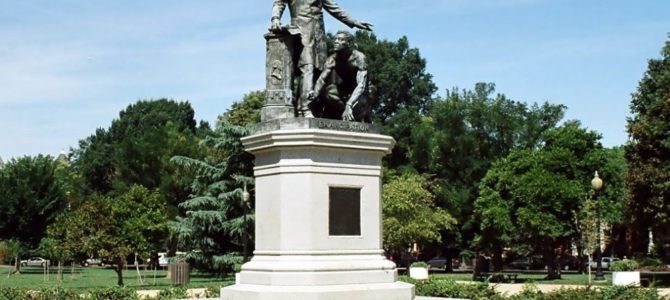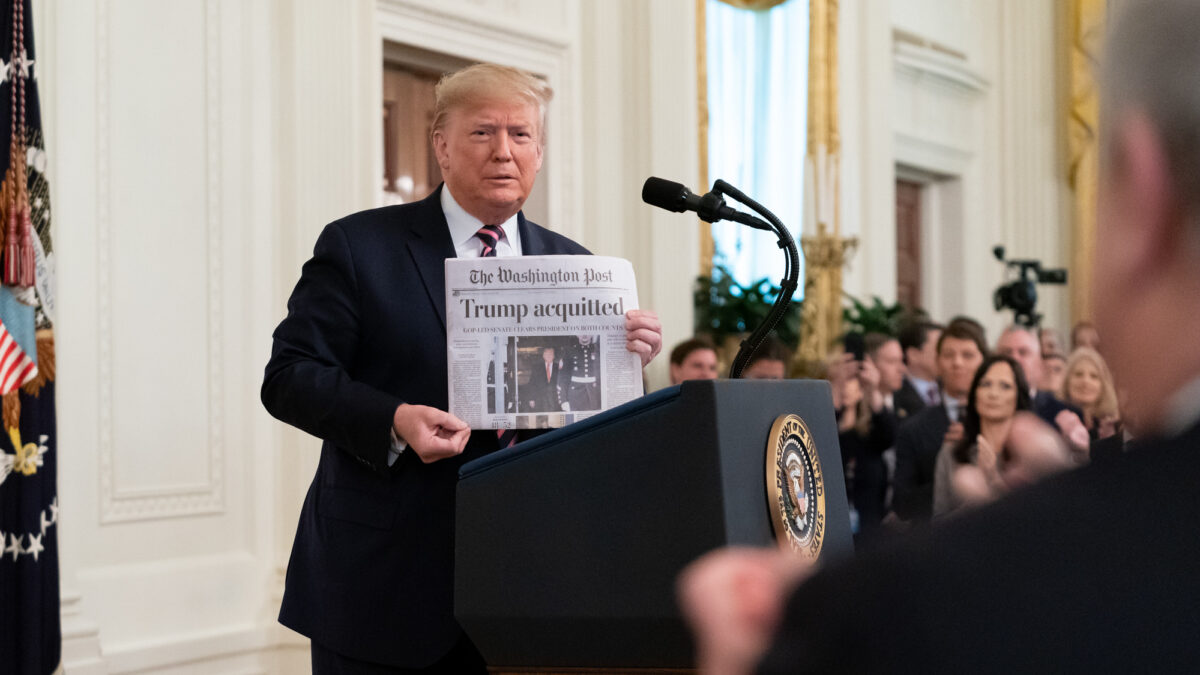
Black Lives Matter Protesters have threatened to tear down the Emancipation Memorial in Washington. District of Columbia Delegate to Congress Eleanor Holmes Norton also called for the “problematic” statue’s removal from Lincoln Park, alleging the statue fails to note how enslaved African Americans pushed for their emancipation. Norton said former slave and abolitionist Frederick Douglass “expressed his displeasure” at its unveiling.
In truth, Frederick Douglass predicted members of his race looking back at its dedication in the distant future “will think of it and speak of it with a sense of manly pride.” On April 14, 1876, the 11th anniversary of Lincoln’s assassination, Douglass delivered the keynote address at the unveiling of this memorial. President Grant, senators, cabinet members, and Supreme Court justices attended the ceremony. Douglass proclaimed:
We have done a good work for our race today. In doing honor to the memory of our friend and liberator, we have been doing highest honors to ourselves and those who come after us; we have been fastening ourselves to a name and fame imperishable and immortal … When now it shall be said that the colored man is soulless, that he has no appreciation of benefits or benefactors; when the foul reproach of ingratitude is hurled at us, and it is attempted to scourge us beyond the range of human brotherhood, we may calmly point to the monument we have this day erected to the memory of Abraham Lincoln.
Charlotte Scott was a former slave, freed by Lincoln’s Emancipation Proclamation. When she heard that President Lincoln had been assassinated, Scott stated, “The colored people have lost their best friend on earth! Mr. Lincoln was our best friend, and I will give five dollars of my wages towards erecting a monument to his memory.”
Her contribution sparked a movement for freed slaves to raise money to erect a memorial to Lincoln. The monument drive came to the attention of the Western Sanitary Commission, which cared for the Civil War’s refugees in the western states, including wounded soldiers, widows, orphans, and freed slaves. The commission spread the word, and thousands of contributions poured in from former slaves — many of them former soldiers who had proudly served in the Union Army. The tally from these donations totaled more than $12,000.
Sculptor Thomas Ball’s original marble version of the memorial represented the kneeling slave as passive, simply receiving the boon of freedom from the hand of the great liberator. James Yeatman, President of the Western Sanitary Commission, objected.
So “the artist changed this, to bring the presentation nearer to the historical fact, by making the emancipated slave an agent in his own deliverance.” The former slave was “accordingly represented as exerting his own strength with strained muscles in breaking the chain which had bound him. A far greater degree of dignity and vigor, as well as of historical accuracy, is thus imparted.”
The original was also changed by introducing, instead of an anonymous slave, the figure of a living man — the last slave in Missouri taken up under the fugitive-slave law, and who was, at one time, rescued from his captors. That man’s name was Archer Alexander.
The bronze version of the Emancipation Memorial that sits in Lincoln Park not only pays tribute to the standing figure of Abraham Lincoln, the Great Emancipator. It also honors the heroic figure of Archer Alexander, breaking his chains and rising from his knees.
Yet recently, a man named Tory Bullock started an online petition for the statue’s removal, which has garnered thousands of signatures. “I’ve been watching this man on his knees since I was a kid,” Bullock states in the petition’s description. “It’s supposed to represent freedom but instead represents us still beneath someone else. I would always ask myself ‘If he’s free why is he still on his knees?’ No kid should have to ask themselves that question anymore.”
The best answer comes from Marcia Cole, a member of the Female Re-Enactors of Distinction of the African American Civil War Museum who portrays Charlotte Scott. “I understand there’s a big campaign trying to raise money to either take it down or mend it, and I say ‘no’ on behalf of Ms. Charlotte,” she told ABC7 News in Washington. “People tend to think of that figure as being servile, but on second look you will see something different, perhaps. That man is not kneeling on two knees with his head bowed. He is in the act of getting up. And his head is up, not bowed because he’s looking forward to a future of freedom.”
Norton, Bullock, and other descendants of slaves in America are no longer in bondage because of the great Americans, black and white, who fought a bloody Civil War and abolished slavery. We should all be grateful to Lincoln for the Emancipation Proclamation, for preserving the Union, and for ending slavery. And we should be just as grateful to Archer Alexander and all those he represents who broke their chains, raised their heads high, and stood tall so all men may breathe free!









